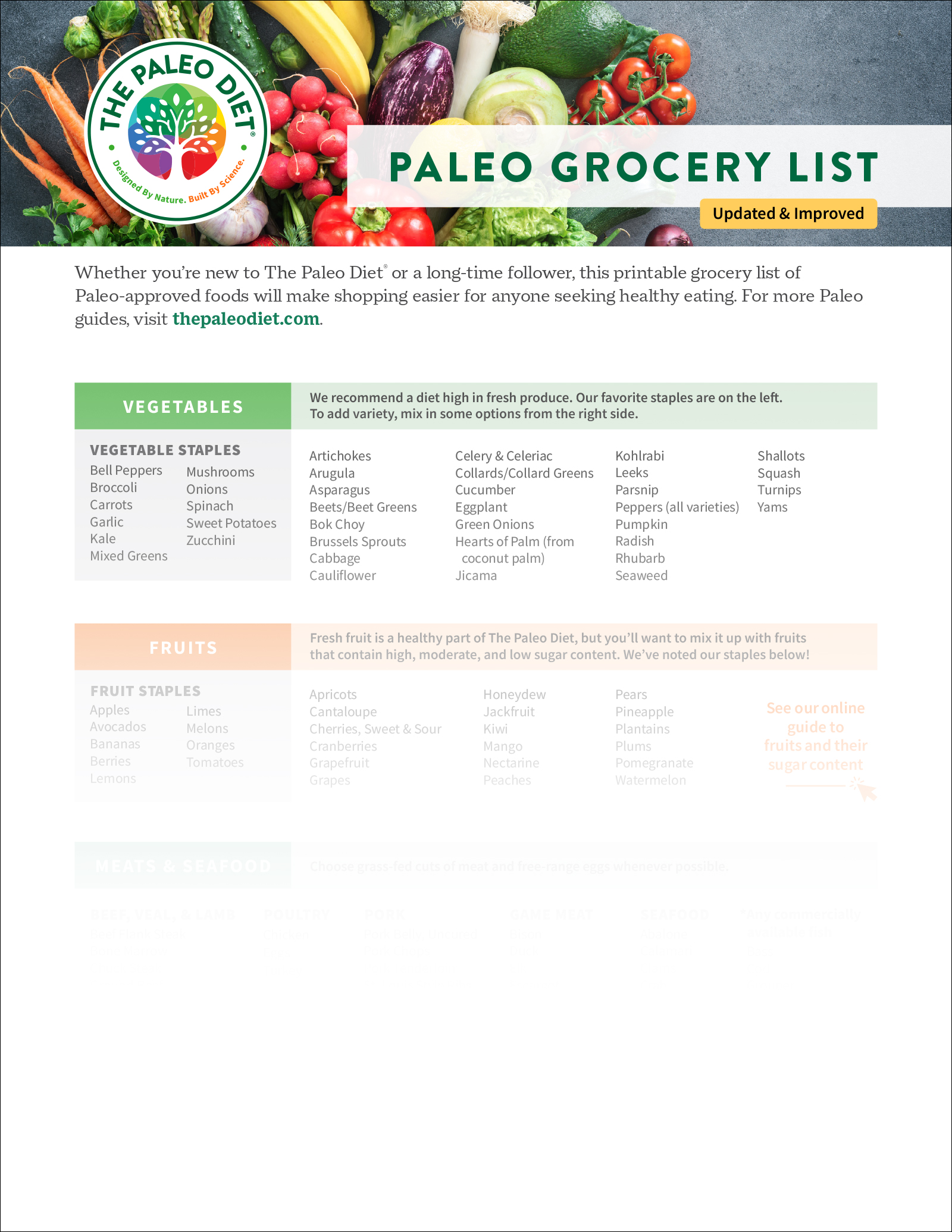The History of Fortified Foods

If you’ve ever spent time looking at food nutrition labels, you may have noticed the addition of certain nutrients to foods. Whole milk often contains added vitamin D, salt has added iodine, enriched flour has added folic acid, and so on. When and where did this get started? Who thought it made sense to add synthetic vitamins and minerals to natural, whole foods? Here’s a brief history of fortified foods and some healthier alternatives for keeping a balanced diet.
The Beginnings of Food Fortification
Food fortification in the United States began in the early 1900s as a response to widespread deficiency diseases. In the 1920s, iodine deficiency, which can lead to goiters, was especially common in specific regions, like the areas surrounding the Great Lakes, the Appalachians, and in the Pacific Northwest.1
A coalition of public health groups recommended adding iodine to table salt, and iodized salt first appeared in Michigan in May 1924. National distribution of iodized salt followed in autumn of that same year.2 The rollout was believed to raise IQ levels by about 15 points in severely iodine-deficient areas and ultimately contributed to improvements in the economy.3
Not long afterward, in the early 1930s, vitamin D was added to milk and margarine to address rickets, a disease researchers had linked to vitamin D deficiency. As industrialization advanced, people spent less time in the sunshine, leading to widespread vitamin D deficiency. Food fortification was the government’s solution to address this issue.4
Grain Enrichment in the World War II Era
During World War II, the U.S. military noticed alarmingly poor nutritional status in their new recruits. Many of these young men suffered from pellagra and beriberi, known to be from niacin (vitamin B3) and thiamin (vitamin B1) deficiencies. These deficiency diseases arose because the refined white breads and flours popular at the time were mostly stripped of the nutrients present in whole grains (and whole foods in general).5
In response, the Food and Drug Administration (FDA) issued standards in 1941 for enriched flour, requiring it to have pre-determined amounts of thiamin, riboflavin (vitamin B2), niacin, and iron. The fortification of commercially prepared white bread was soon widespread. By 1942, about 75% of white bread nationwide was enriched.6
This enrichment effort effectively eliminated classic deficiency diseases like pellagra and beriberi in the United States, which resulted from consuming these nutrient-depleted foods. It also laid the groundwork for fortified grain products, such as all-purpose flour, breakfast cereals, pasta, rice, and bread, which are still on grocery store shelves today.
RELATED: Grain-Free Alternatives for Cooking and Baking
Folic Acid in the 1990s
While the enrichment of grain products remained mandatory, the late 1900s brought new public health threats like neural tube defects, which can cause conditions like spina bifida and anencephaly. These conditions were linked to low folate intake during pregnancy.7
In March 1996, the FDA proposed adding synthetically produced folic acid (vitamin B9) to enriched breads, cereals, flours, cornmeal, pasta, rice, and other grain-based foods. This officially took effect at the beginning of 1998. Ever since, folic acid fortification has been credited with a 35% decrease in neural tube birth defects in the United States.8
Still today, enriched grain products in the U.S. are required to contain thiamin, riboflavin, niacin, iron, and folic acid.9
Why the U.S. Government Mandates Enriched or Fortified Foods
The rationale behind government-mandated food fortification is grounded in the idea of protecting public health. Adding essential micronutrients to foods people already regularly consume ensures they’re getting the nutrients they need. Rather than relying on individual dietary changes or supplement use, governments use the existing food supply chain to prevent population-level deficiencies.
In addition, the FDA’s concept of “standards of identity” ensures that any product labeled “enriched” meets strict nutrient levels. It’s a regulatory tool that balances public health needs with industry needs.10
Supposed Benefits and Potential Drawbacks
Food fortification campaigns have eliminated or dramatically reduced several deficiency diseases, and the economic and cognitive benefits have been significant, especially with iodine interventions. However, some experts have concerns, such as:11,12,13
- Dietary habits: Today, many people aren’t even consuming the foods the government has chosen to fortify. Some are gluten-free or grain-free, including those following a Paleo diet. Non-dairy nut milks often replace vitamin D–fortified milk, and some consumers get raw milk directly from family farms.
- Bioavailability issues: Folic acid is a synthetic version of folate (which can be found in natural foods). Not everyone is able to utilize it. Moreover, the addition of fat-soluble vitamin D to low-fat milk may not be well absorbed. Phytates present in whole grains may reduce the absorption of certain minerals, like zinc.
- Excess intake: Not everyone is deficient in these vitamins and minerals. Consuming high levels of folic acid can lead to high levels of circulating unmetabolized folic acid in those who are also taking folic acid-containing supplements.
- Over-fortification for marketing purposes: Companies may fortify unnecessarily and with levels potentially higher than recommended.
In addition, fortified foods tend to fall outside of Paleo standards as they make up dairy, grains, and salt. Though their nutrients are boosted through food fortification, they still do not make a healthy substitute for Paleo options. Still, the benefits are thought to outweigh most risks when it comes to the health of the general population, especially when these programs are carefully monitored.
Nutrient Deficiencies Can Still Happen
While fortification may help to fill some general nutritional gaps, individuals with certain deficiencies may experience food cravings that lead them to foods high in the nutrients they need.
Iron deficiency anemia is one of the most common nutrient deficiencies in the United States today. It affects women of childbearing age, vegetarians, and those with absorption issues.14
Anemic individuals may crave starchy foods like cereal, which can be fortified with iron. Typical symptoms of anemia include fatigue, cold hands and feet, irritability, brittle hair or nails, and other unusual cravings—like a craving for ice (known as pica).
It’s always important to pay attention to your body and see if your cravings are trying to tell you something. Ultimately, the best way to avoid nutrient deficiencies is to eat a variety of nutrient-dense foods, including whole fruits and vegetables, animal proteins, and nuts and seeds. For those who are at a higher risk of deficiency, such as low-income households or the chronically or critically ill, supplementation may be necessary.
Paleo Whole Food Solutions
Although fortified foods like cereal can be convenient sources of iron and B vitamins; whole, non-supplemented foods are often superior sources of nutrition. They’re also more bioavailable. Paleo-aligned examples include:
- Heme iron sources such as red meat, poultry, and fish.
- Non-heme iron sources like dark green leafy vegetables and dried fruits.
Additionally, whole foods contain cofactors—or “helper molecules” that assist with enzyme reactions. For example, B vitamins often appear together in eggs, nuts, and certain vegetables, which may provide synergistic metabolic benefits that aren’t present in isolated nutrient fortification.15
RELATED RECIPE: Sweet Potato Hash with Sausage & Kale
Should the Government Continue with Fortified Foods?
Making the distinction between food fortification/enrichment as public policy and personalized nutrition is key to the conversation. Government mandates focus on the health of the overall population. They aim to prevent deficiencies across large groups by adding essential nutrients to widely consumed foods.
In some places—like food deserts—continued fortification can still benefit people’s health at a population level. But, when possible, it’s better to focus on personal responsibility and tailored nutrition. Those experiencing cravings or symptoms should consider testing. Blood tests can detect iron or B vitamin deficiencies, and subsequent dietary changes should emphasize nutrient-dense whole foods tailored to personalized needs.
Enriched and fortified foods in the United States are examples of public health interventions stemming from scientific research and public policy. They’re designed to reduce deficiency diseases, not to optimize health. Individual nutrition still matters.
Cravings for fortified cereal or bread can point toward deficiencies. However, these cravings should be seen as signals, not prescriptions for government intervention. Instead of increasing ultra-processed fortified foods, turn to whole-food sources of nutrients, as with The Paleo Diet®.
References
- Leung A, Braverman L, Pearce E. History of U.S. Iodine Fortification and Supplementation. Nutrients [Internet]. 2012 Nov 13;4(11):1740–6. Available from: https://www.ncbi.nlm.nih.gov/pmc/articles/PMC3509517/
- Markel H. “When it rains it pours”: endemic goiter, iodized salt, and David Murray Cowie, MD. American Journal of Public Health. 1987 Feb;77(2):219–29. https://pmc.ncbi.nlm.nih.gov/articles/PMC1646845/
- Feyrer J, Politi D, Weil DN. The Cognitive Effects of Micronutrient Deficiency: Evidence from Salt Iodization in the United States. Journal of the European Economic Association. 2017 Apr;15(2):355–87. https://pmc.ncbi.nlm.nih.gov/articles/PMC6919660/
- Hernigou P, Auregan JC, Dubory A. Vitamin D: part II; cod liver oil, ultraviolet radiation, and eradication of rickets. International Orthopaedics. 2019 Jan 9;43(3):735–49. https://pubmed.ncbi.nlm.nih.gov/30627846/
- Sebrell WH. Public Health Aspects of Enriched Flour and Bread. A Report of an Address. The Indian Medical Gazette [Internet]. 1941 Oct [cited 2025 Aug 29];76(10):625. Available from: https://pmc.ncbi.nlm.nih.gov/articles/PMC5185086
- Overview of Food Fortification in the United States and Canada [Internet]. Nih.gov. National Academies Press (US); 2015. Available from: https://www.ncbi.nlm.nih.gov/books/NBK208880/
- Crider KS, Bailey LB, Berry RJ. Folic Acid Food Fortification—Its History, Effect, Concerns, and Future Directions. Nutrients [Internet]. 2011 Mar 15;3(3):370–84. Available from: https://pmc.ncbi.nlm.nih.gov/articles/PMC3257747/
- Updated Estimates of Neural Tube Defects Prevented by Mandatory Folic Acid Fortification — United States, 1995–2011 [Internet]. www.cdc.gov. Available from: https://www.cdc.gov/mmwr/preview/mmwrhtml/mm6401a2.htm
- Grain Requirements in the CACFP: Questions and Answers | Food and Nutrition Service [Internet]. Usda.gov. 2025. Available from: https://www.fns.usda.gov/cacfp/grain-requirements-qas
- Human Foods Program. Standards of Identity for Food [Internet]. U.S. Food and Drug Administration. 2024. Available from: https://www.fda.gov/food/nutrition-food-labeling-and-critical-foods/standards-identity-food
- Cederholm T. Citation: Cederholm T (2023) Food Fortification: Improving Diets and Health Understanding the Advantages, Drawbacks and Best Practices. J Clin Nutr Die [Internet]. 2023;9(1):7. Available from: https://clinical-nutrition.imedpub.com/articles/food-fortification-improving-diets-and-health-understanding-the-advantages-drawbacks-and-best-practices.pdf
- Olson R, Gavin-Smith B, Ferraboschi C, Kraemer K. Food Fortification: The Advantages, Disadvantages and Lessons from Sight and Life Programs. Nutrients [Internet]. 2021 Mar 29;13(4):1118. Available from: https://www.ncbi.nlm.nih.gov/pmc/articles/PMC8066912/
- Servy EJ, Jacquesson-Fournols L, Cohen M, Menezo YJR. MTHFR isoform carriers. 5-MTHF (5-methyl tetrahydrofolate) vs folic acid: a key to pregnancy outcome: a case series. Journal of Assisted Reproduction and Genetics [Internet]. 2018 Aug 1;35(8):1431–5. Available from: https://pubmed.ncbi.nlm.nih.gov/29882091/
- Badireddy M, Baradhi KM. Chronic Anemia [Internet]. PubMed. Treasure Island (FL): StatPearls Publishing; 2023. Available from: https://www.ncbi.nlm.nih.gov/books/NBK534803/
- McNulty H. The Role of B-Vitamins in Nutritional Anemia. Springer eBooks. 2022 Jan 1;173–85. Available from: https://link.springer.com/chapter/10.1007/978-3-031-14521-6_13
Betsy Schroeder
Betsy does research and writing for a few different websites in the natural health field after taking Masters level courses in Nutrition & Functional Medicine through the University of Western States.
More About The Author




